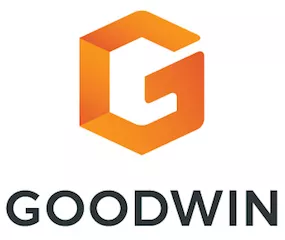- with readers working within the Retail & Leisure industries
- within Transport topic(s)
In the late 1990s and early 2000s, it was commonplace for patent applicants to wait years — sometimes more than three — for a first examination. In recent decades, the examination procedures and tools available to the examining corps have significantly improved these queue times. With the introduction of expedited examinations, a first examination may come as soon as three months, with patents being secured in less than one year from an initial filing. This is certainly a welcome improvement for patent practitioners. But can we do better?
More to the point, can large language models and artificial intelligence (AI) tools accelerate or even replace and automate the entire prosecution process, from drafting and examination to the negotiating of office actions? Are we heading toward a future in which applicant- and examiner-side agents refine claim language, resolve objections, and determine patentability and patents are granted with little or no direct human intervention?
From Automation to Autonomous Interaction
Today, AI tools are already transforming how patent applications are drafted and examined. Applicant-side platforms like Rowan Patents, Specif.io, and PatentPal assist in generating claims and specifications based on user-provided disclosures, flow charts, and other human-generated materials. Similarly, various AI-assisted tools can be trained to search large corpora of documents, including the public patent database, to identify prior art and assess novelty. While possible, combining references to build a strong case for obviousness is more nuanced. So far, efforts in this area appear less accurate, but practitioners are already using tools like &AI and Legora to identify possible claim amendments and overcome such rejections.
Just this week, the United States Patent and Trademark Office (USPTO) announced its Automated Search Pilot Program. The program's goal is to evaluate the impact of providing applicants with an Automated Search Results Notice (ASRN) before the examination of certain utility patent applications. To participate in the pilot, applicants must submit a petition and fee, with the program accepting petitions from October 20, 2025, until April 20, 2026, or until the USPTO accepts 1,600 applications. The USPTO will likely use this pilot program to assess how early access to prior art search results influences patent prosecution and determine the feasibility of scaling the ASRN process.
Is enabling these AI agents to engage in structured, autonomous dialogue to arrive at a "solution" the next logical step? Applicant-side AI tools could, for example, search specifications for narrowing subject matter and propose claim amendments in response to office actions, while an examiner-side AI tool could evaluate proposed amendments against prior art and statutory requirements. Whether the interaction is best modeled as a cooperative exercise or an adversarial game, with each agent optimizing for its respective goals (e.g., securing the broadest protection for the applicant), is just one question to consider.
Practical Examples and Prototypes
While full AI-to-AI negotiation is not yet mainstream, several initiatives are laying the groundwork. Recent demonstrations showed how AI tools could generate office action responses and claim amendments, organized in a "read-to-file" form. This semiautonomous model hints at future systems in which AI agents negotiate claim scope in real time. As an example, the European Patent Office is exploring how AI tools might evaluate and oppose AI-generated claims on both sides, as well as how these tools will apply the "technical effect" and "enablement" requirements.
Benefits and Risks
One of the biggest hurdles for startups and independent inventors is the cost to engage a properly trained, quality patent lawyer. It is not uncommon for applications to exceed $10,000 or $20,000 even when the application is straightforward. Applications for more advanced technologies can cost much more than that. When factoring in the iterative costs of reviewing and responding to office actions, expenses escalate quickly.
AI tools can certainly increase the speed and consistency of the application process, which can directly lead to reduced costs and greater accessibility for startups and inventors.
Of course, well-financed companies could leverage these tools and "flood" the USPTO with applications generated by AI, hoping to land some percentage of issued patents. Furthermore, as AI-to-AI negotiation becomes more feasible, critical questions arise, such as "Who is accountable for errors in AI-generated filings?" and "How do we ensure fairness and transparency in autonomous interactions?" The USPTO's latest guidance on AI-based tools emphasizes that AI-generated submissions must meet the same ethical and procedural standards as human work and, in the end, a human will still be signing the applications, attesting that the applications meet all statutory requirements.
* * *
AI-to-AI negotiation in patent prosecution is not science fiction. It is a foreseeable evolution in tools of the trade. Practitioners are starting to get comfortable using them, and clients are starting to expect their use. For lawyers, this shift presents opportunities and challenges. They will need to develop the technical fluency to use these tools, just as lawyers once adapted to the internet and web-based technologies, while maintaining a focus on ethics and guarding against overreliance on automation. The future of patent prosecution may well be shaped by how effectively the industry and those tasked with its oversight guide the use of these intelligent agents in negotiating the boundaries of innovation.
The content of this article is intended to provide a general guide to the subject matter. Specialist advice should be sought about your specific circumstances.


